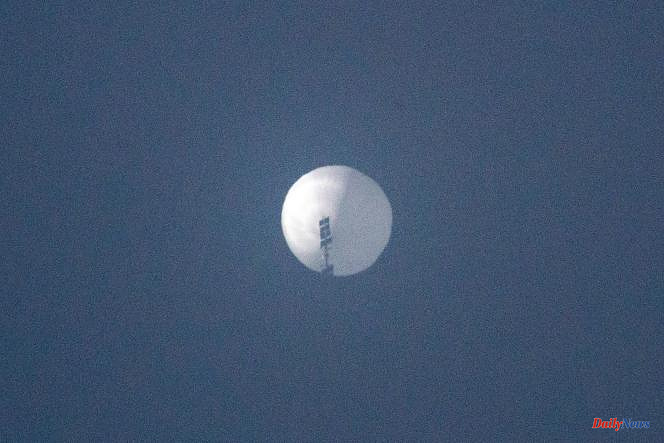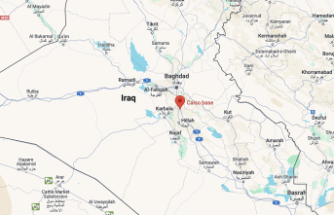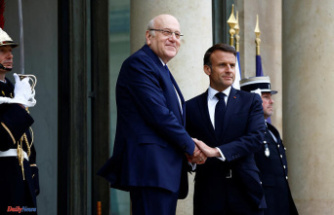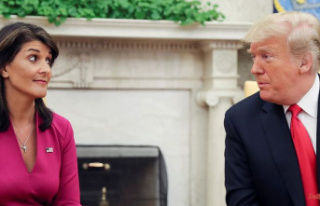Since the beginning of February, the discovery of aerostats at high altitude above American soil has caused a diplomatic crisis between the United States and China. Several devices have been observed and shot down, but they differ in form and nature, feeding many questions and fantasies.
How many flying machines have been identified?
Four aircraft have been reported and shot down by the United States, since the discovery of a suspicious balloon over American territory. In details :
What do they look like?
The first balloon-shaped object spotted on February 1 was 60 meters high – the equivalent of three buses. Covered with several solar panels, it carried a nacelle weighing more than a ton. He is the only one whose membership in China is admitted by both countries.
The three objects that followed were much smaller than the first and flew at a lower altitude. They were shot down after aerial surveillance was increased. The second and third were approximately the size of a small car, the third was cylindrical in shape, while the fourth was octagonal. At this stage, there is no evidence that they have a connection with the Chinese ball.
Why do Americans blame China?
According to the United States, the first aerostat, the giant balloon, was used to collect strategic information on American infrastructures. It had many antennas, making it "probably capable of collecting and geolocating communications," according to the White House.
On Wednesday, February 8, Washington accused Beijing of operating a "fleet of balloons intended for spy operations" on five continents. In the process, Washington placed on the blacklist of companies prohibited from trading with the United States one of the branches of CETC (China Electronics Technology Group), a state-owned company producing surveillance and intelligence equipment, in particular spy balloons, reports Bloomberg. The United States had already blacklisted several of its divisions.
What about China?
According to Beijing, the balloon was a weather device that accidentally strayed from its intended route, and the Americans "overreacted". Beijing then adopted a more accusatory stance. "Since last year alone, American balloons have flown over [territory of] China more than 10 times without any permission," said Chinese diplomatic spokesman Wang Wenbin on Monday, February 13. quoted by AFP. The United States has denied these allegations.
Denials from both countries leave experts skeptical. “We know that the United States is the greatest spy power in the world, recalls Marc Julienne, researcher at the French Institute of International Relations (IFRI). This should not hide the fact that China is progressing very quickly in the field of intelligence, whether from a human or technological point of view, as we can see with this balloon. »
How have other countries reacted?
Other Washington allies have signaled their concern, even their determination to act. Taiwan, which complains of frequent overflights by "Chinese drones", has declared that it reserves the right to shoot down these "new threats", the spokesman for the Ministry of Defense announced on Monday, February 13, quoted by AFP.
British Defense Secretary Ben Wallace announced that "the United Kingdom and its allies will reflect on what these aerial intrusions mean for their security," while British Transport Secretary Richard Holden called China of "hostile state." »
What is the nature of the other three downed craft?
A certain mystery surrounds the three aerostats spotted in recent days. Upon review, US officials admitted they did not pose a safety concern, other than the risk of collision with a commercial aircraft. For the rest, circumspection remains. “We do not know who owns it, whether it is a state, a company or an individual […]. And we don't understand its use at this time," a White House spokesperson said.
One of the reasons is the condition of the devices. Not all of the debris has yet been recovered. The third aircraft, for example, crashed in the frozen waters of Alaska. American and Canadian forces have planned to work together to try to recover the fourth, crashed in the Yukon (northwestern Canada), in order to analyze it.
Is it true that the hypothesis of an extraterrestrial craft has been raised?
Asked about the possibility that these objects were sent by extraterrestrials, the commander of the American aerospace forces, General Glen Van Herck, soberly explained "not having ruled out anything at this stage". This very open response unleashed imaginations. Silvano Trotta, an influential conspiracy theorist, was delighted that "media like the Berliner Zeitung are reporting on an alien invasion". The Berlin daily, however, only mentions the rumors on social networks, without accrediting this thesis. Similarly, the Trump Fact News account writes that according to CNN, the craft shot down over Alaska "may have been an alien spacecraft." The American journalist Natasha Bertrand, a specialist in national security, is however content to note that "the pilots do not agree on what they saw".
In reality, the very open response of the American aerospace forces is above all intended to avoid making a mistake. Faced with the question of a possible extraterrestrial origin, "either we pass for a fanatic, or we accuse superpowers like Russia or China without proof, resituates Marc Julienne, and from a diplomatic point of view, this has consequences deleterious".
Faced with the excitement, the spokeswoman for the White House, Karine Jean-Pierre, nevertheless clarified on Monday, February 13, that the American authorities had "no indication of extraterrestrials or extraterrestrial activities".
What does international law say about the situation?
The Chinese balloon crisis raises several questions: that of air sovereignty, the use of identified devices, and the proportionality of the American response.
The first point is the least debatable: for Vincent Correia, professor of public law at the University of Paris-Saclay, there is "no doubt" that the Chinese airship was in American territory. According to Article 1 of the Chicago Convention, which regulates international civil aviation, each state "has complete and exclusive sovereignty over the airspace above its territory". The Chinese balloon was floating at an altitude of 18 kilometers, but the airspace has no explicit vertical limit.
More delicate, however, is that of their use. "The law is finely crafted: you must let civilian aircraft pass through your territory but not military aircraft", explains William Woll, lawyer in Paris and Metz, specialist in international law. It is still necessary to know the nature of the device. Between the civilian and the military is also the gray area of espionage, which no international treaty prohibits, except when it is accompanied by a violation of territorial sovereignty, which is the case of the Chinese balloon.
There remains the question of proportionality, which is the one that troubles lawyers the most. “The destruction as such partakes of the destruction of the evidence; how to show it is a spy device? asks Vincent Correia. He evokes "a rather strict and brutal approach" to the concept of sovereignty, particularly convincing in the case of the following three devices. “Before the destruction, there is a whole color chart,” underlines William Woll: the United States could thus have sought to intercept the device instead of shooting it down.
However, there is little chance that the United States and China will find themselves before an international court: neither Washington nor Beijing have ratified international treaties that could expose them to a legal face-to-face.












